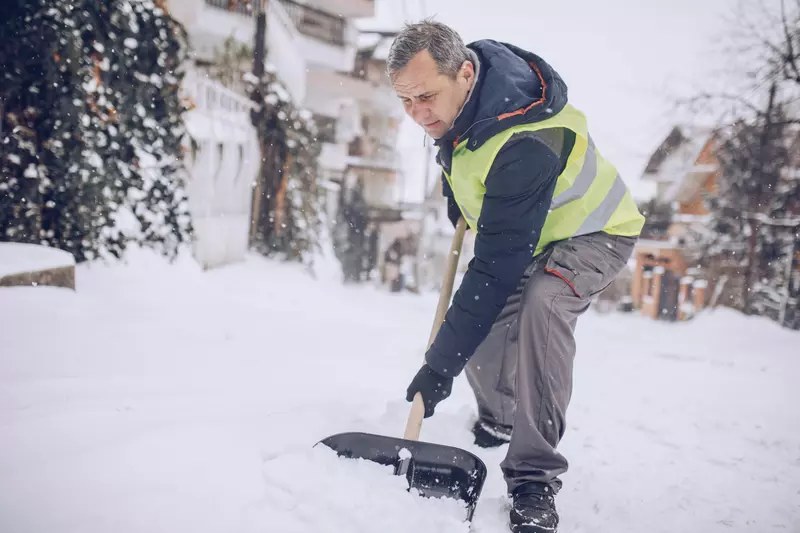- AdventHealth

Choose the health content that’s right for you, and get it delivered right in your inbox.
If asked to describe snow, most people use words like light, fluffy and airy. But the truth is that the average snow-covered driveway equates to hundreds of pounds. That’s a lot for anyone to shovel, let alone aging individuals or those at an increased risk for a heart attack.
When we shovel snow, we exert a lot of energy in our chest and arms that can take a toll on our hearts. Our heart rate and blood pressure can also increase when we’re cold for longer periods of time or engaging in activities we wouldn’t otherwise be doing.
Age Factor
It isn’t just older people who are at risk. In fact, according to the National Library of Medicine, a recent research study concluded that men in their early 30s raised their heart rate and blood pressure levels while shoveling snow to that of someone doing intense aerobic exercise.
With that in mind, if you’re middle aged or older — heart problems or not — it’s important to take precautions to protect yourself from a major health event.
Go Slow and Stay Low
Even though you want to get the job done, your body will thank you for taking breaks. Don’t try to get all paths cleared in one pass. It’s also important to remember that not all snow is created equal. Save the wet and heavy snow for a snowblower or help from a friend or family member. Many hands make light work.
When you do need to shovel, make sure you understand the safest way. Because shoveling snow uses more upper body than lower body exertion, proper body mechanics is crucial to preventing a heart attack or other medical condition from occurring. Remember the saying, “lift with your legs?” The same applies here — use your legs to push the snow instead of your arms to lift the snow.
Layer for Protection
This one seems counterintuitive because when you shovel snow, your heart rate increases, and it’s common to sweat. However, it’s best to always wear gloves and a hat, and cover your mouth and nose to prevent inhaling too much cold air.
If you’re shoveling snow slowly and with caution, you should be able to keep your body temperature neutral. Take breaks when you’re feeling either too hot or too cold — and stay hydrated.
Listen to Your Body
If you’re like most Americans who think, “I’ve felt this way before and was fine,” or “I’m shoveling snow — of course I’m going to be sweaty,” please don’t take these symptoms lightly. Studies suggest that a heavy snowfall increases hospital admissions by 6% with men having heart attacks, as well as a 34% increase in deaths.
You know your body best, and you know when something just doesn’t feel right. Exercise caution and call 911 if you experience any signs of heart attack, including:
- Chest pressure, tightness or heaviness
- Dizziness, lightheadedness or general weakness
- Excessive sweating
- Nausea and/or vomiting
- Pain that spreads to the arms, neck, jaw or back
We’re Here to Help Keep You Safe
Shoveling snow is a strenuous activity and can be dangerous. But the healthier and more active you are, the better equipped you’ll be the next time snow falls in your area. And if you’re healthy, please be aware of others in your neighborhood who may need help.
Our mission at AdventHealth is to help you feel whole through compassionate care and world-class expertise. With any one of our 95 emergency room locations, our entire team is dedicated to delivering quality, attentive care when you need it most.


